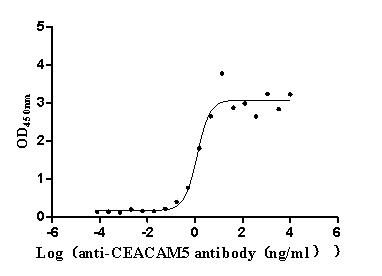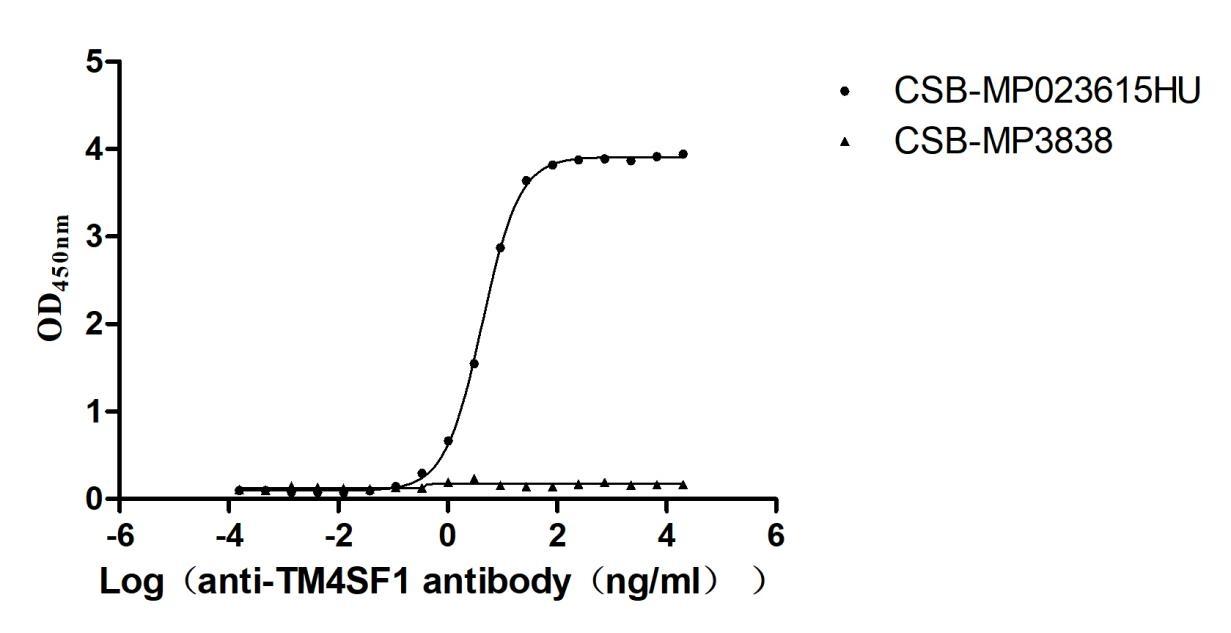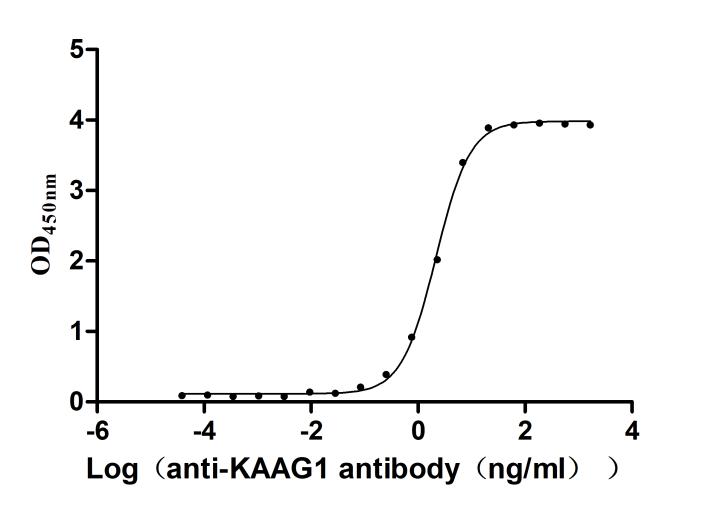Recombinant Human Brain-specific angiogenesis inhibitor 1 (BAI1), partial
-
中文名稱:Recombinant Human Brain-specific angiogenesis inhibitor 1(BAI1) ,partial,Yeast
-
貨號(hào):CSB-YP002541HU
-
規(guī)格:
-
來源:Yeast
-
其他:
-
中文名稱:Recombinant Human Brain-specific angiogenesis inhibitor 1(BAI1) ,partial,Yeast
-
貨號(hào):CSB-EP002541HU
-
規(guī)格:
-
來源:E.coli
-
其他:
-
中文名稱:Recombinant Human Brain-specific angiogenesis inhibitor 1(BAI1) ,partial,Yeast
-
貨號(hào):CSB-EP002541HU-B
-
規(guī)格:
-
來源:E.coli
-
共軛:Avi-tag Biotinylated
E. coli biotin ligase (BirA) is highly specific in covalently attaching biotin to the 15 amino acid AviTag peptide. This recombinant protein was biotinylated in vivo by AviTag-BirA technology, which method is BriA catalyzes amide linkage between the biotin and the specific lysine of the AviTag.
-
其他:
-
中文名稱:Recombinant Human Brain-specific angiogenesis inhibitor 1(BAI1) ,partial,Yeast
-
貨號(hào):CSB-BP002541HU
-
規(guī)格:
-
來源:Baculovirus
-
其他:
-
中文名稱:Recombinant Human Brain-specific angiogenesis inhibitor 1(BAI1) ,partial,Yeast
-
貨號(hào):CSB-MP002541HU
-
規(guī)格:
-
來源:Mammalian cell
-
其他:
產(chǎn)品詳情
-
純度:>85% (SDS-PAGE)
-
基因名:
-
Uniprot No.:
-
別名:B830018M07Rik; BAI 1; BAI1; BAI1_HUMAN; Brain specific angiogenesis inhibitor 1; Brain-specific angiogenesis inhibitor 1; GDAIF; KIAA4089; mKIAA4089; R75078
-
種屬:Homo sapiens (Human)
-
蛋白長度:Partial
-
蛋白標(biāo)簽:Tag?type?will?be?determined?during?the?manufacturing?process.
The tag type will be determined during production process. If you have specified tag type, please tell us and we will develop the specified tag preferentially. -
產(chǎn)品提供形式:Lyophilized powder
Note: We will preferentially ship the format that we have in stock, however, if you have any special requirement for the format, please remark your requirement when placing the order, we will prepare according to your demand. -
復(fù)溶:We recommend that this vial be briefly centrifuged prior to opening to bring the contents to the bottom. Please reconstitute protein in deionized sterile water to a concentration of 0.1-1.0 mg/mL.We recommend to add 5-50% of glycerol (final concentration) and aliquot for long-term storage at -20℃/-80℃. Our default final concentration of glycerol is 50%. Customers could use it as reference.
-
儲(chǔ)存條件:Store at -20°C/-80°C upon receipt, aliquoting is necessary for mutiple use. Avoid repeated freeze-thaw cycles.
-
保質(zhì)期:The shelf life is related to many factors, storage state, buffer ingredients, storage temperature and the stability of the protein itself.
Generally, the shelf life of liquid form is 6 months at -20°C/-80°C. The shelf life of lyophilized form is 12 months at -20°C/-80°C. -
貨期:Delivery time may differ from different purchasing way or location, please kindly consult your local distributors for specific delivery time.Note: All of our proteins are default shipped with normal blue ice packs, if you request to ship with dry ice, please communicate with us in advance and extra fees will be charged.
-
注意事項(xiàng):Repeated freezing and thawing is not recommended. Store working aliquots at 4°C for up to one week.
-
Datasheet :Please contact us to get it.
相關(guān)產(chǎn)品
靶點(diǎn)詳情
-
功能:Phosphatidylserine receptor which enhances the engulfment of apoptotic cells. Also mediates the binding and engulfment of Gram-negative bacteria. Stimulates production of reactive oxygen species by macrophages in response to Gram-negative bacteria, resulting in enhanced microbicidal macrophage activity. In the gastric mucosa, required for recognition and engulfment of apoptotic gastric epithelial cells. Promotes myoblast fusion. Activates the Rho pathway in a G-protein-dependent manner. Inhibits MDM2-mediated ubiquitination and degradation of DLG4/PSD95, promoting DLG4 stability and regulating synaptic plasticity. Required for the formation of dendritic spines by ensuring the correct localization of PARD3 and TIAM1. Potent inhibitor of angiogenesis in brain and may play a significant role as a mediator of the p53/TP53 signal in suppression of glioblastoma.; Inhibits angiogenesis in a CD36-dependent manner.; Inhibits angiogenesis.
-
基因功能參考文獻(xiàn):
- We have uncovered a new role for BAI1 in facilitating macrophage anti-viral responses. We show that arming oHSV with antiangiogenic Vstat120 also shields them from inflammatory macrophage antiviral response, without reducing safety PMID: 27852701
- Data suggest agonist-induced signal transduction via either BAI1/ADGRB1 or GPR56/ADGRG1 does not require conserved membrane-proximal stalk region; thus, it appears GAIN domain cleavage via autoproteolysis is not necessary for receptor activation. PMID: 26710850
- BAI1 may be involved in the negative regulation of bladder transitional cell carcinoma microvascular proliferation, and its expression may be associated with a reduction in p53 mutations. PMID: 26129954
- Results show that lower BAI1 expression correlates with poorer patient survival, and high Nestin expression is associated with an increased probability of metastases in breast cancer patients. PMID: 25376607
- recognition of apoptotic cells by BAI1 contributes to their clearance in the human gastric mucosa and this is associated with anti-inflammatory effects PMID: 24509909
- findings demonstrate that BAI1 is a synaptic receptor that can activate both the Rho and ERK pathways, with the N-terminal and C-terminal regions of the receptor playing key roles in the regulation of BAI1 signaling activity PMID: 23782696
- The results of this study indicated that BAI1 plays an important role in synaptogenesis that is mechanistically distinct from its role in phagocytosis. PMID: 23595754
- Proprotein convertases, primarily furin, activate latent matrix metalloproteinase-14, which then directly cleaves BAI1 to release the bioactive fragment. PMID: 22330140
- MBD2 overexpression during gliomagenesis may drive tumor growth by suppressing the antiangiogenic activity of a key tumor BAI1. PMID: 21724586
- brain-specific angiogenesis inhibitor 1 over-expression suppresses tumour angiogenesis PMID: 11875720
- BAI1 was expressed in cerebral neurons but not astrocytes. It was localized in the cytoplasm and cell membrane. BAI1 protein may play an important role in synapse formation and signal transduction PMID: 12074842
- BAI1 was widely expressed in normal brain but was absent in 28 glioma cell lines and in the majority of human glioblastoma investigated. BAI1 expression did not correlate with TP53 status PMID: 12507886
顯示更多
收起更多
-
亞細(xì)胞定位:Cell membrane; Multi-pass membrane protein. Cell projection, phagocytic cup. Cell junction, focal adhesion. Cell projection, dendritic spine. Cell junction, synapse, postsynaptic density.; [Vasculostatin-120]: Secreted.; [Vasculostatin-40]: Secreted.
-
蛋白家族:G-protein coupled receptor 2 family, LN-TM7 subfamily
-
組織特異性:Expressed in brain (at protein level). Expressed on mononuclear phagocytes and monocyte-derived macrophages in the gastric mucosa (at protein level). Expressed in normal pancreatic tissue but not in pancreatic tumor tissue. Reduced or no expression is obs
-
數(shù)據(jù)庫鏈接:
Most popular with customers
-
Recombinant Human 5'-nucleotidase (NT5E) (Active)
Express system: Mammalian cell
Species: Homo sapiens (Human)
-
Recombinant Human Pro-neuregulin-1, membrane-bound isoform (NRG1), partial (Active)
Express system: Mammalian cell
Species: Homo sapiens (Human)
-
Recombinant Human T-cell surface protein tactile (CD96), partial (Active)
Express system: Mammalian cell
Species: Homo sapiens (Human)
-
Recombinant Human E3 ubiquitin-protein ligase ZNRF3 (ZNRF3), partial (Active)
Express system: Mammalian cell
Species: Homo sapiens (Human)
-
Recombinant Human Claudin-9 (CLDN9)-VLPs (Active)
Express system: Mammalian cell
Species: Homo sapiens (Human)
-
Express system: Mammalian cell
Species: Homo sapiens (Human)
-
Recombinant Human Transmembrane 4 L6 family member 1(TM4SF1)-VLPs (Active)
Express system: Mammalian cell
Species: Homo sapiens (Human)
-
Recombinant Human Kidney-associated antigen 1(KAAG1) (Active)
Express system: E.coli
Species: Homo sapiens (Human)



-AC1.jpg)
-AC1.jpg)















